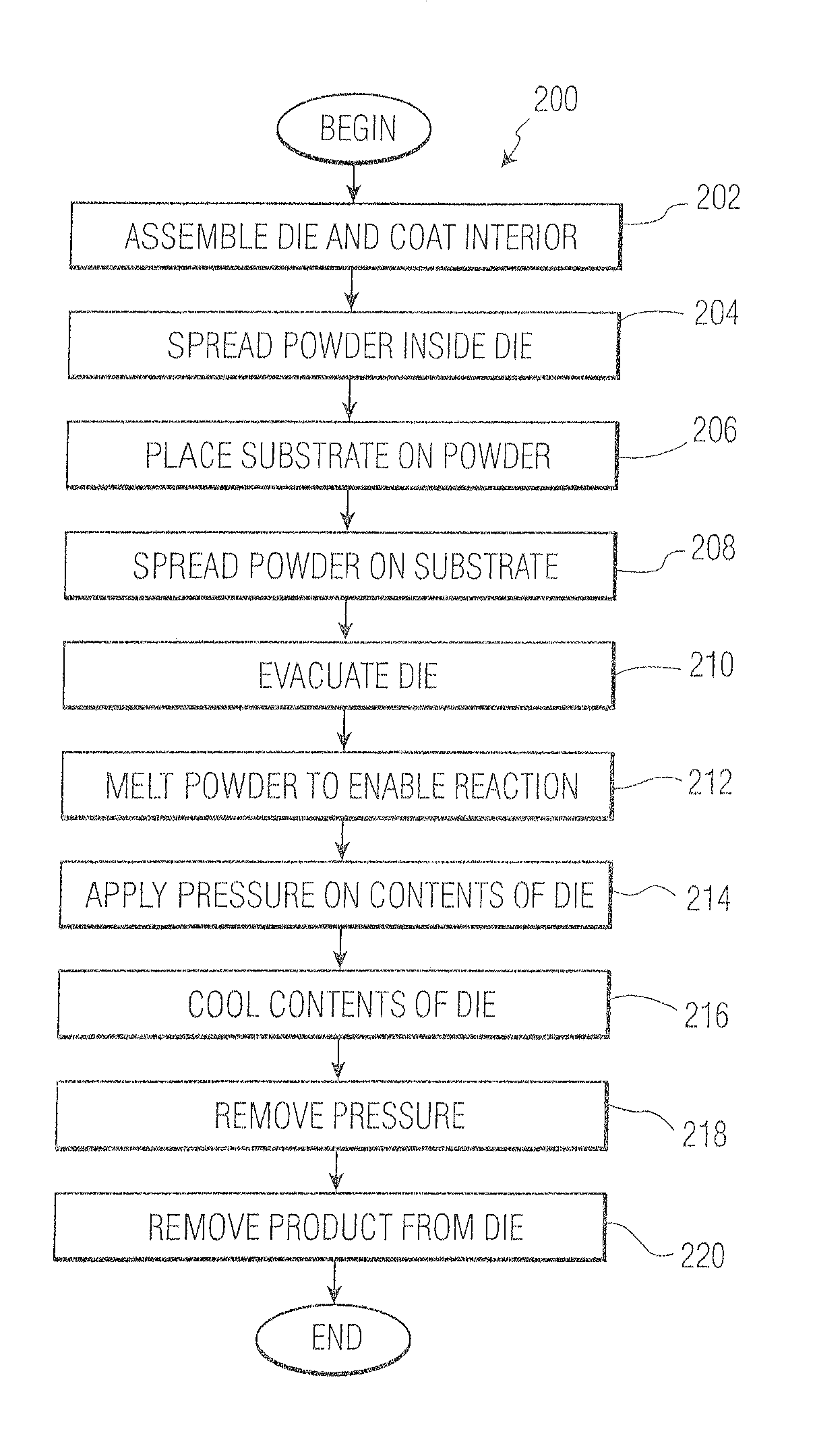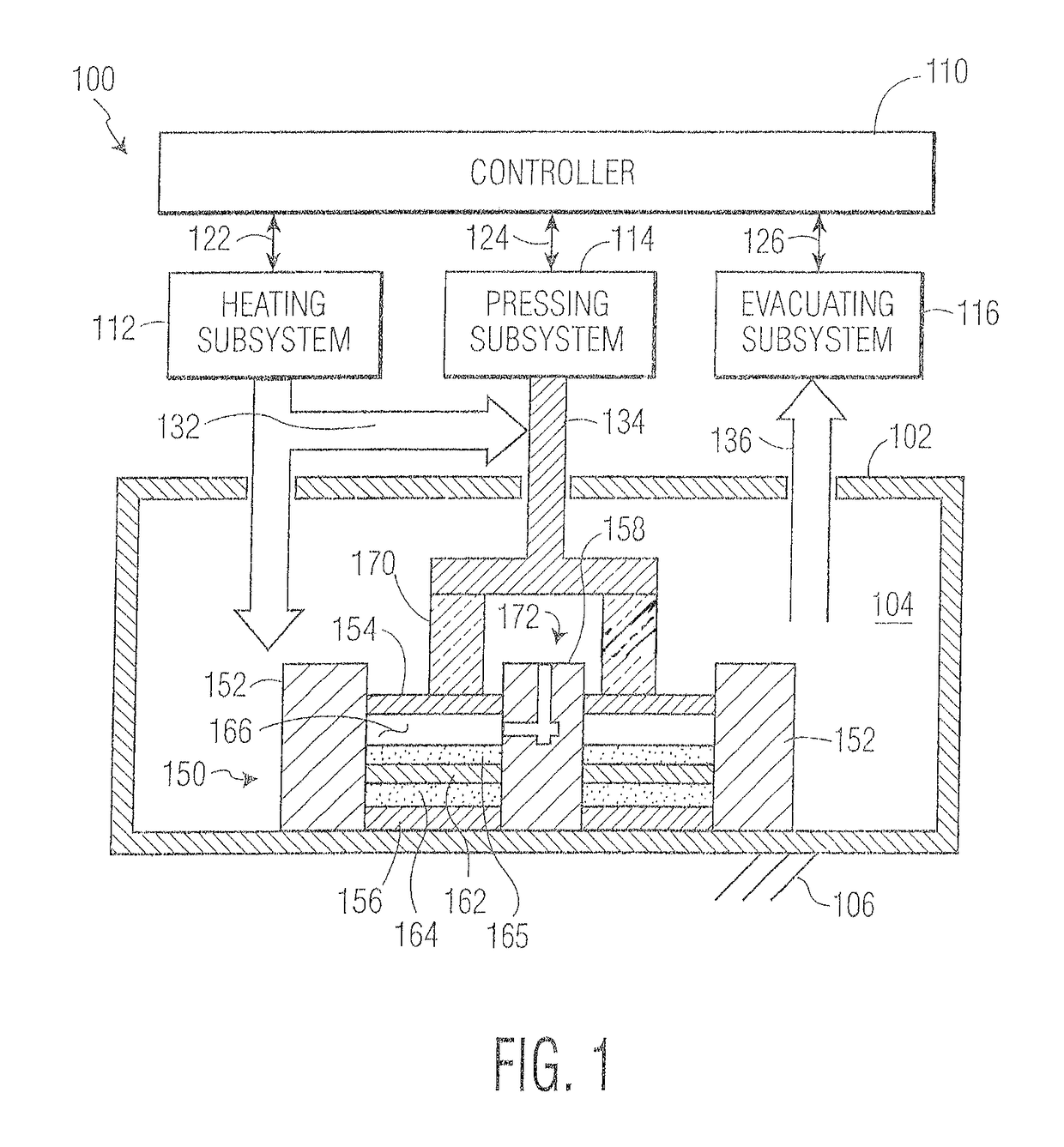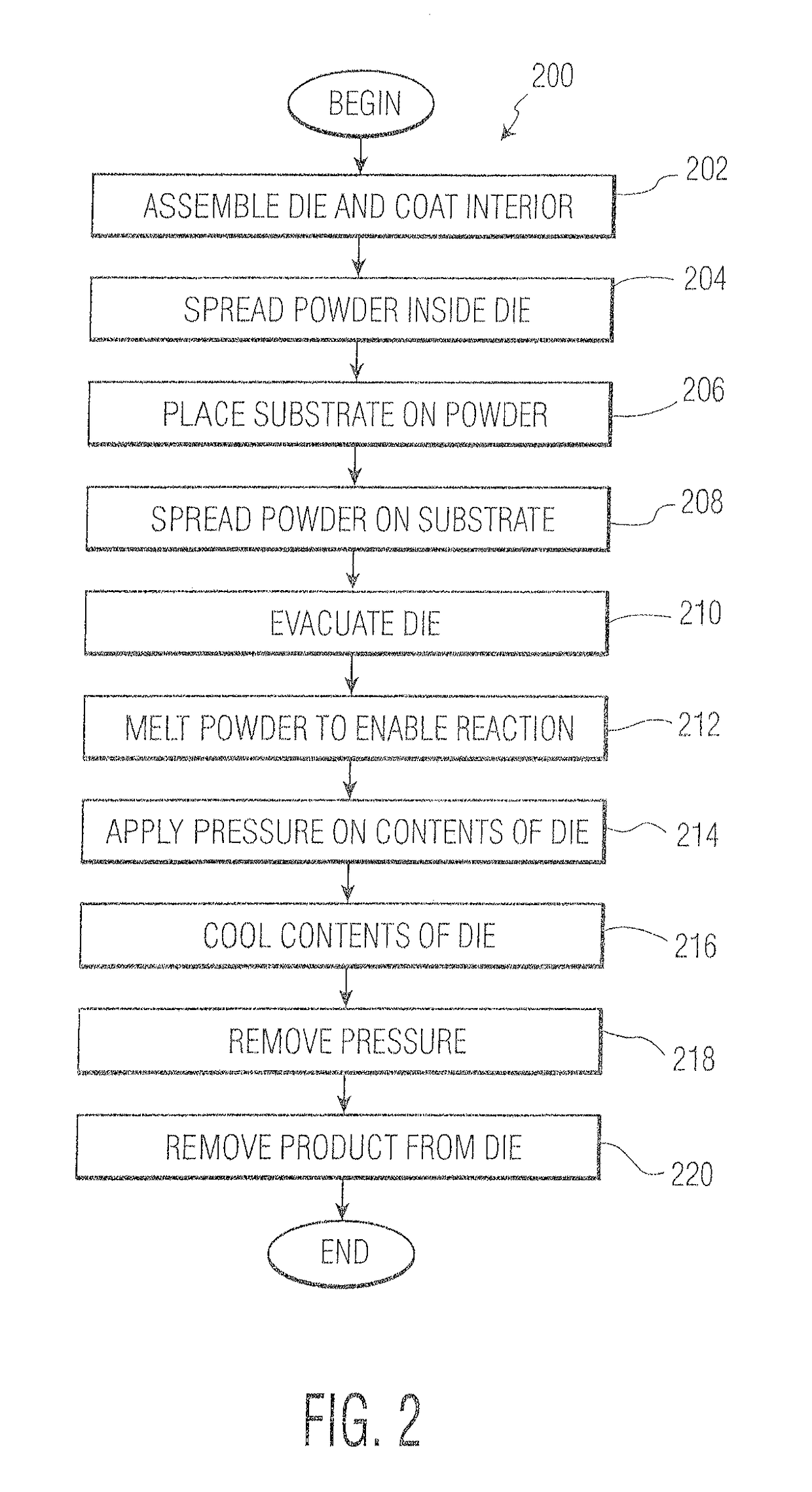Systems and methods for forming a layer onto a surface of a solid substrate and products formed thereby
a solid substrate and substrate technology, applied in the direction of brake discs, mechanical equipment, machines/engines, etc., can solve the problems of generating dust, rotor wear, and relatively heavy conventional cast iron brake rotors, and achieve the effects of improving mechanical and thermal properties, improving heat capacity, and improving wear ra
- Summary
- Abstract
- Description
- Claims
- Application Information
AI Technical Summary
Benefits of technology
Problems solved by technology
Method used
Image
Examples
example i
[0073]As a first example, a vehicular brake rotor may be formed using method 200 as follows. At steps 204 and 208 the powder comprises powdered aluminum silicon alloy, silicon carbide powder, and titanium powder. There is no binder in the powder. The AlSi alloy component material is 59.5% by weight of the type marketed by Valimet as Grade S-9 having a distribution of particle sizes defined by D10 4.82 microns, D50 15.23 microns, and D90 37.56 microns. The SiC component material is 38.0% by weight of the type marketed by ESK as Grade F600-D having particle size from 10 microns to 20 microns. The titanium component material is 2.5% by weight of the type marketed by ADMA having particle size of about 44 microns specified as 325-mesh. The powder is mixed until uniform in material distribution. Each powder portion 164 and 165 is spread to a uniform thickness of 0.010 inch to 0.25 inch, preferably 0.060 to 0.125 inch, more preferably 0.040 to 0.080 inch, most preferably about 0.050 inch.
[...
example ii
[0086]As a second example, a vehicular brake rotor may be formed in a variation of method 200 as follows. At steps 204 and 208, the powder comprises aluminum alloy, titanium, and silicon carbide. The aluminum alloy is of the type generally referred to as 356. Silicon carbide is included at 35% of the powder. Ninety percent of the silicon carbide particles are 15 micrometers (μm). The particles are dry mixed by any conventional mixing technology (e.g., ball mill with steel balls or ceramic balls, attrition milling, rotational tumbling, pulse fluid bed). After mixing to a uniform material consistency, the powder is poured into a die to contain the mixture when heated to above the melting point of the aluminum alloy of the powder.
[0087]At step 206, a plate of pure aluminum produced by casting or rolling is used as the substrate and aluminum alloy 356 used as the surface layers.
[0088]At step 210, the loaded die is placed in a chamber capable of evacuation of air. A vacuum pump is used t...
example iii
[0097]As a third example, the process of Example II was repeated, except the substrate was formed of aluminum alloy 5052, and the metal alloy powder used in the surface layers was type 4032.
PUM
| Property | Measurement | Unit |
|---|---|---|
| particle sizes | aaaaa | aaaaa |
| volume percent | aaaaa | aaaaa |
| porosity | aaaaa | aaaaa |
Abstract
Description
Claims
Application Information
 Login to View More
Login to View More - R&D
- Intellectual Property
- Life Sciences
- Materials
- Tech Scout
- Unparalleled Data Quality
- Higher Quality Content
- 60% Fewer Hallucinations
Browse by: Latest US Patents, China's latest patents, Technical Efficacy Thesaurus, Application Domain, Technology Topic, Popular Technical Reports.
© 2025 PatSnap. All rights reserved.Legal|Privacy policy|Modern Slavery Act Transparency Statement|Sitemap|About US| Contact US: help@patsnap.com



